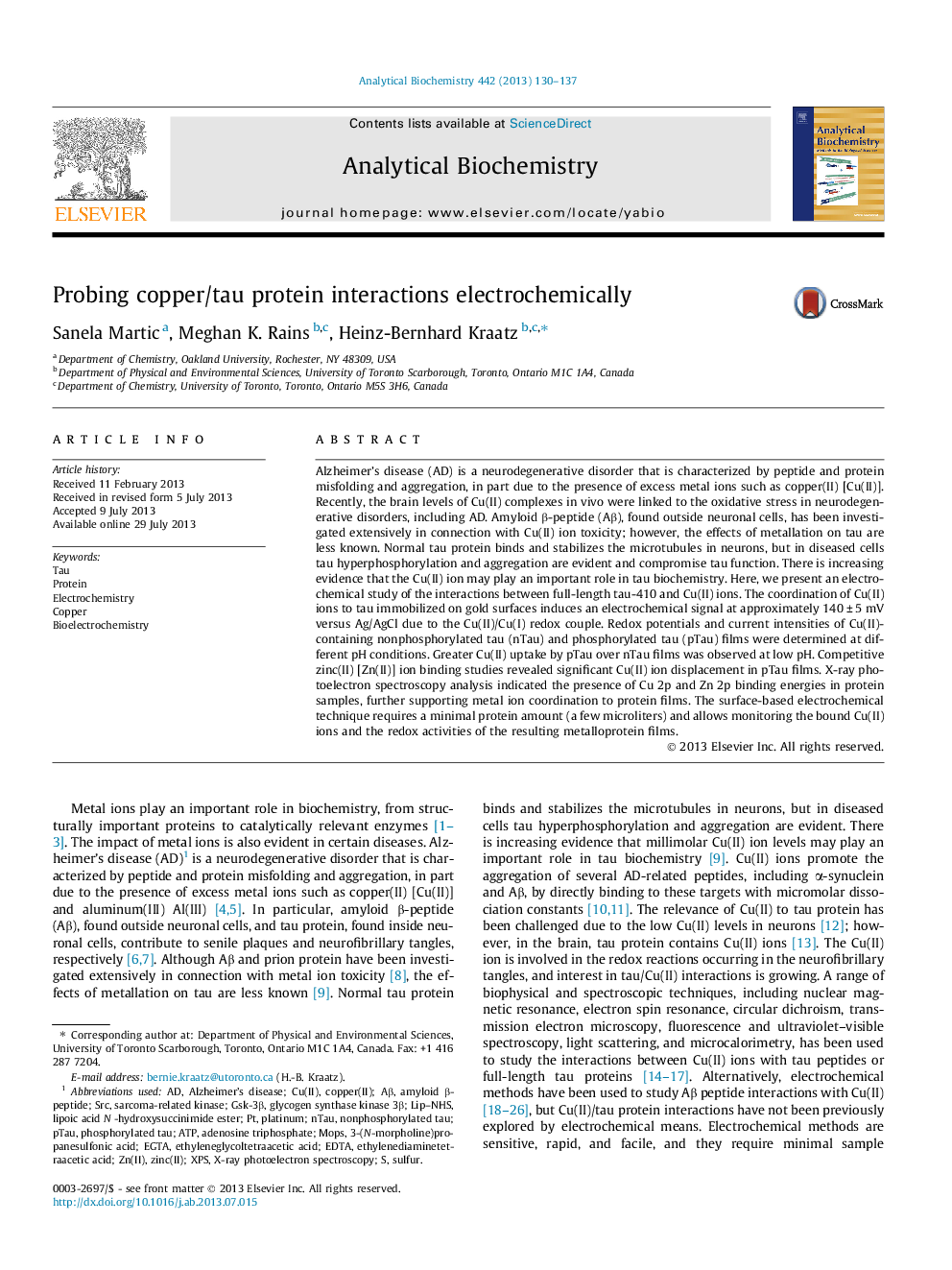| کد مقاله | کد نشریه | سال انتشار | مقاله انگلیسی | نسخه تمام متن |
|---|---|---|---|---|
| 1173666 | 961694 | 2013 | 8 صفحه PDF | دانلود رایگان |

Alzheimer’s disease (AD) is a neurodegenerative disorder that is characterized by peptide and protein misfolding and aggregation, in part due to the presence of excess metal ions such as copper(II) [Cu(II)]. Recently, the brain levels of Cu(II) complexes in vivo were linked to the oxidative stress in neurodegenerative disorders, including AD. Amyloid β-peptide (Aβ), found outside neuronal cells, has been investigated extensively in connection with Cu(II) ion toxicity; however, the effects of metallation on tau are less known. Normal tau protein binds and stabilizes the microtubules in neurons, but in diseased cells tau hyperphosphorylation and aggregation are evident and compromise tau function. There is increasing evidence that the Cu(II) ion may play an important role in tau biochemistry. Here, we present an electrochemical study of the interactions between full-length tau-410 and Cu(II) ions. The coordination of Cu(II) ions to tau immobilized on gold surfaces induces an electrochemical signal at approximately 140 ± 5 mV versus Ag/AgCl due to the Cu(II)/Cu(I) redox couple. Redox potentials and current intensities of Cu(II)-containing nonphosphorylated tau (nTau) and phosphorylated tau (pTau) films were determined at different pH conditions. Greater Cu(II) uptake by pTau over nTau films was observed at low pH. Competitive zinc(II) [Zn(II)] ion binding studies revealed significant Cu(II) ion displacement in pTau films. X-ray photoelectron spectroscopy analysis indicated the presence of Cu 2p and Zn 2p binding energies in protein samples, further supporting metal ion coordination to protein films. The surface-based electrochemical technique requires a minimal protein amount (a few microliters) and allows monitoring the bound Cu(II) ions and the redox activities of the resulting metalloprotein films.
Journal: Analytical Biochemistry - Volume 442, Issue 2, 15 November 2013, Pages 130–137